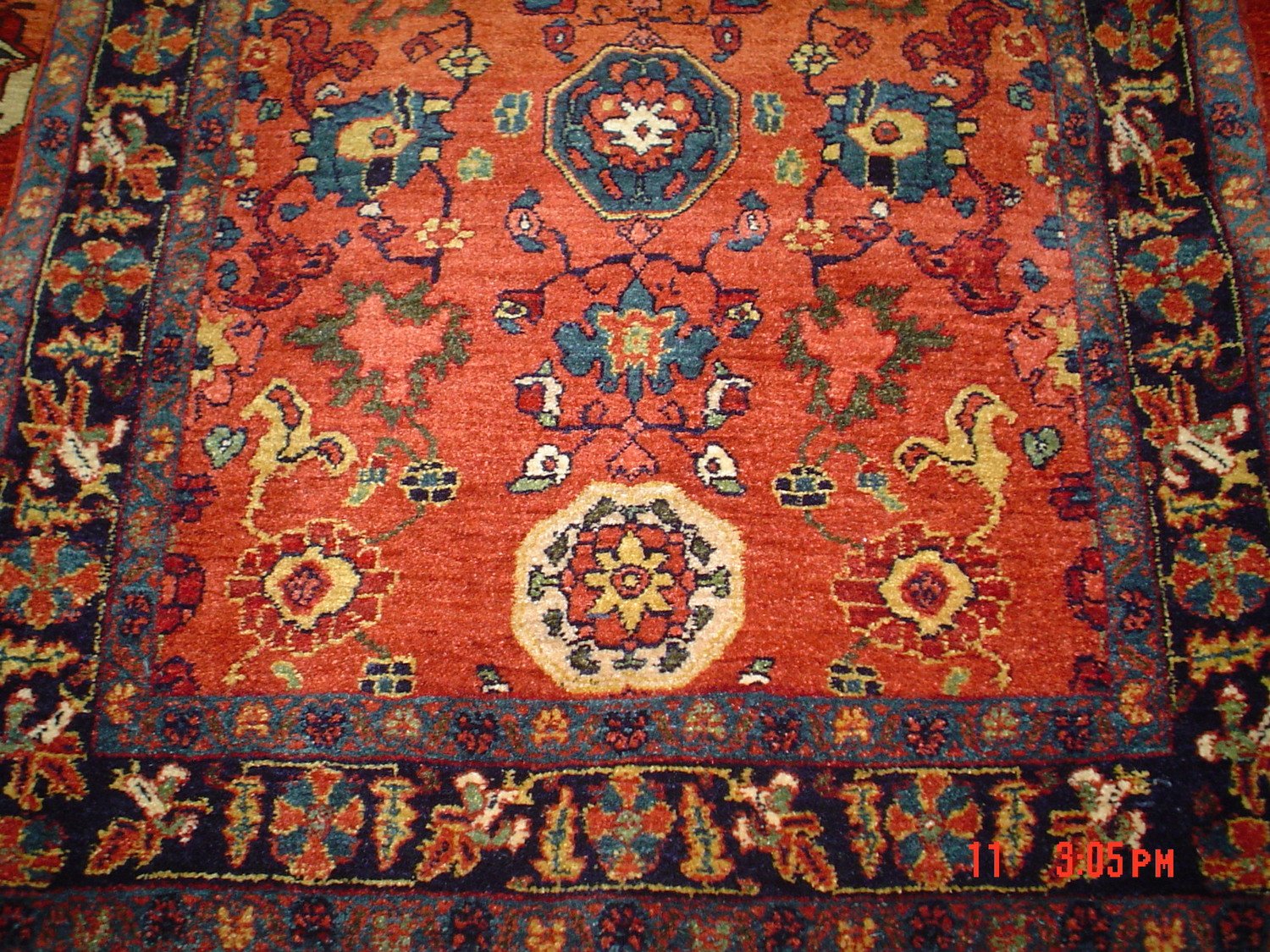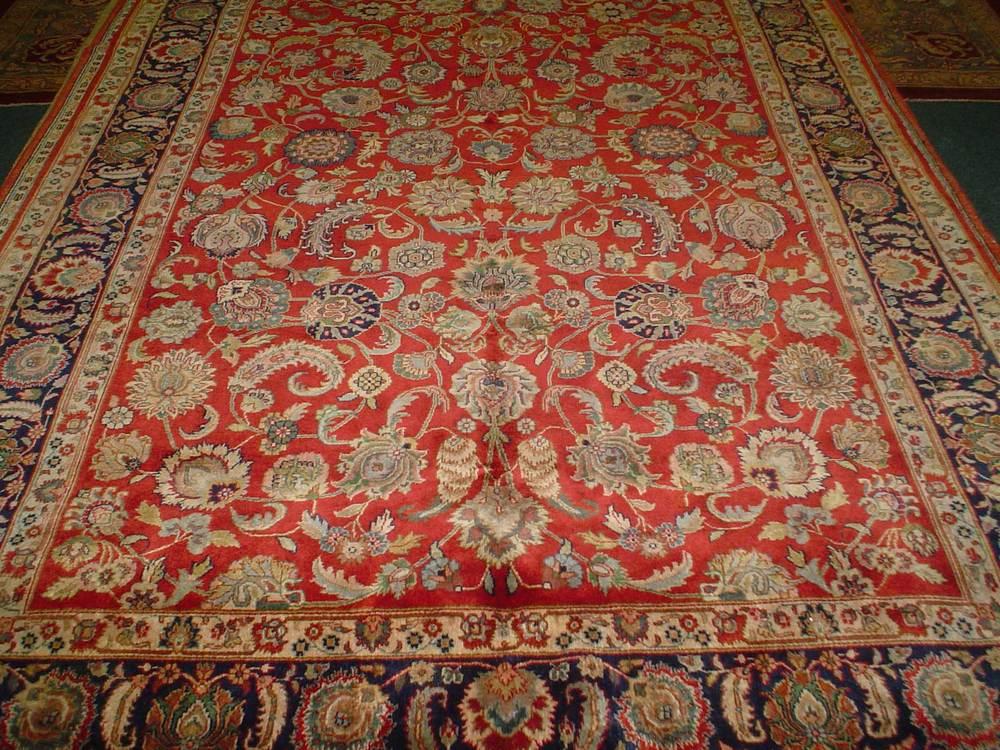What is the Difference Between an Oriental Rug and a Persian Rug? By Penny Krieger ©2019-2024
A Persian rug or Persian carpet is a handwoven or hand knotted rug, woven in Iran. It can be a kilim (flat woven rug) or a knotted pile rug. The term carpet denotes a larger size but often these two terms, Oriental carpet and Oriental rug are used interchangeably. An antique rug indicates an age of 100 years or more, strictly speaking.
Persia was officially renamed Iran in 1935. If you look at a map of the former Persian Empire you can see that the borders were quite different than the current area that is Iran and have changed many times throughout history. My point being, if an antique rug was woven in 1850 in what was then classified as Persia it would still be considered a Persian rug, even if that location is not now within current Iranian borders. A Turkish rug is not a Persian rug, nor are rugs woven in India, China, Romania and the like.
What is an Oriental Rug?
This is an "Indo Sarouk", Sarouk design, woven in India. By all definitions it is an Oriental rug but not noteworthy.
Oriental rug is a more generalized term for handwoven rugs and carpets, woven on a loom, of wool, silk or cotton. The full subject also includes all the woven textiles used by nomads inside and outside of their dwellings or decoratively on their animals, such as camels and goats. These types of woven articles are referred to as Oriental Rug trappings and sometimes, you will find goat hair or camel hair used as well.
An example of a rug that uses goat hair is the Turkish Tulu, which use silky, shinny angora goat hair but these examples are not the norm. The majority of rugs that have been woven for the last few hundred years are of wool composition most often woven on a cotton foundation (warp and wefts). Traditionally, nomadic rugs were woven with wool on wool foundations.
Again, an Oriental rug can be from any number of countries. As indicated in my article, How Oriental Rugs are Named , the name of the rug often indicates where the rug was woven or the tribal weavers often associated with that location. Afghan rugs, Chinese rugs or Turkish rugs are all, also Oriental Rugs as well as Turkoman rugs (tribal affiliations) and Qashqai rugs.
So, in summary, the generalized term for a hand-woven rug is Oriental rug. The specific term for rugs woven in Iran is Persian rug.
What is a Persian Rug?
Here is a Persian rug. This is a new rug, from Iran, woven recently in an antique design. The rug was woven with hand-spun wool, dyed with vegetable or plant based dyes.
Is there such a thing as a Persian Oriental Rug? Yes. This would be an Oriental rug woven in Iran. The term Persian Oriental rug is not widely used in the trade but logically applicable. I noticed recently a number of searches with this phrasing so just thought I would comment on it.
Are machine-woven rugs made in Iran? Yes. Very surprising but true. Just do a simple search on Google for Iranian machine woven rugs and you will see numerous manufacturers.
Are Oriental rugs woven in the United States? No, they are not. The term "Oriental rug" indicates the Orient or the East. Are Karastan rugs Oriental rugs? No, they are machine-made rugs, made here in the US. Many of their designs are taken from antique handwoven Persian rugs.
If you are interested in learning more about Oriental rugs, do have a look at my Oriental rug articles page, with particular attention to a small rug dictionary I put together, defining some basic terms.
Additionally, here is a link to my youtube channel, if you are interested in looking at some beautiful rugs!
Penny Krieger is the owner of Paradise Oriental Rugs, Inc., located in Walla Walla, WA. Her gallery specializes in tribal rugs and carpets woven with hand-spun wool and plant-based dyes with a strong emphasis on Persian rugs and tribal designs woven in Afghanistan. She is now selling rugs on an appointment basis. For more info please have a look at her website: https://www.paradiseorientalrugs.com Phone: 707-823-3355


